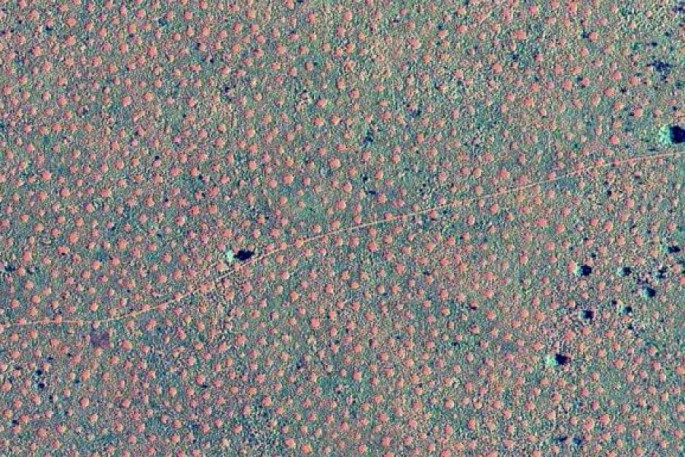Australian "fairy circles" are not similar to "crop circles," and now, scientists are finally able to explain that humans nor aliens are responsible for these mysterious circles spread out over vast areas in Western Australia. A new research indicates that the Australian circles have been created by plants themselves.
Crop circles stand as a mystery to this day, where conspiracy theorists and scientists have strictly opposite views. However, the fairy circles discovered in Western Australia's Pilbara region, on outskirts of small mining town called Newman, have a brief explanation. Previously, similar circles were discovered Namibia, located in sourth-western Africa and the Australian circles are the second known case, ABC reported.
The fairy circles in Australia are not caused by extra-terrestrials or humans beings, but these small clearings are the results of plants managing to survive together in scarcity of water. Located 15-kilometers to the east to south-east of Newman, the circles were observed to show uniform hexagonal patterns throughout the arid grasslands.
These bare soil intervals are approximately four meters in diameter, gaped at 10 meters from a common focal point. the hexagonal shape of the fairy circles is most visible when observed from the air, they can hardly be noticed walking around those fields.
The Australian circles were first reported in 2014 by Australian environmental scientist Ms Bronwyn Bell. Bell later informed and co-studied the phenomena with Dr Stephan Getzin, who is a fairy circle expert from the Helmholtz Centre for Environmental Research.
Since their discovery, the fairy circles have been subject of many theories, including insect invasion and carbon monoxide bubbles rising to the surface. But the latest research published in the Proceedings of the National Academy of Sciences points out that the plants are maneuvering the patterns, grouping themselves together and leaving the empty patches to compensate scarceness of water.
Dr Todd Erickson, from the Restoration Seed Bank Initiative at the University of Western Australia has been working on the phenomena for the last eight years. According to him, people have known about the existence of the Australian circles for years, but no skilled person like Getzin has ever gone as far as mapping it out on the landscape scale.
"Our soil analysis revealed that there are strong infiltration contrasts between vegetation areas and bare soil gaps [with hard soil crusts]," ABC quoted Dr Getzin as saying. Aerial mapping of the fields by Dr Getzin has ruled out the insect hypothesis, while according to the researcher, rarity of these circles also makes the study exciting.
Research analyzed temperature and permeability of the soil, showing that water flowed across the hard-baked patches where spinifex grasses were cropping up. The plants maintained cool temperature and briskness of soil towards edges of the circles, allowing more plants to grow on the area.
Australian and African circles appear very similar despite the fact that they are 10,000 kilometers apart. The only difference is that Namibia circles did have ant nests populating the strange hexagonal patches, but the majority of Australian circles lacked any kind of termite mounds.
While Australian fairy circles are backed by scientific evidence, crop circles will continue to dance the mysteries between conspiracists and researchers. The following video shows some beautiful crop circles.



























